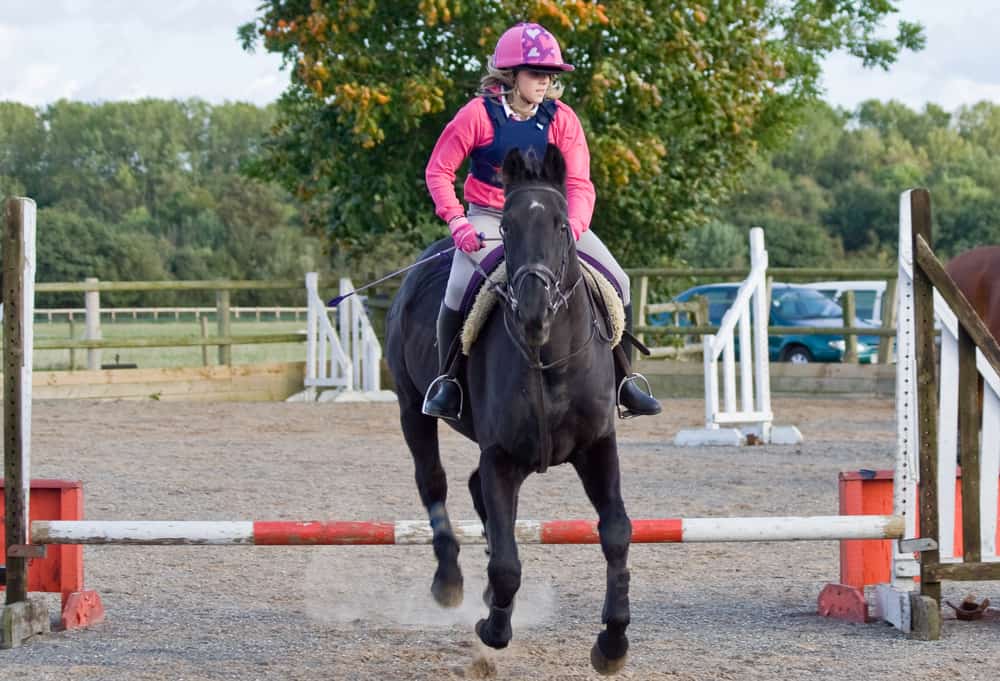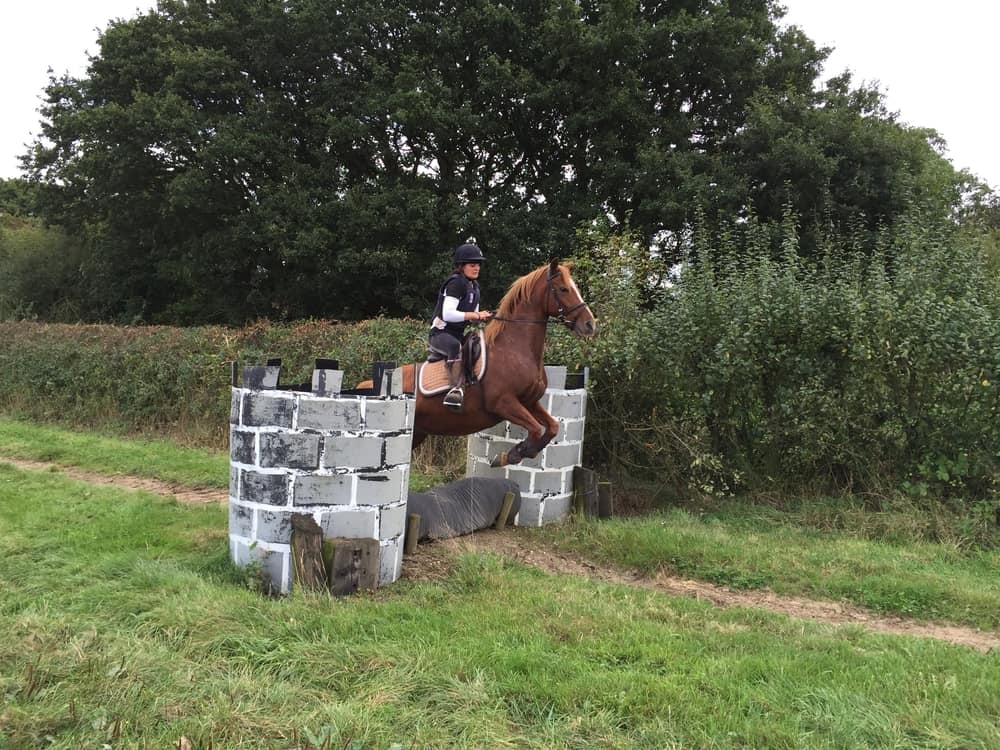
Over recent years, I have seen more and more riders using body protectors. In the past, they were mostly seen (as compulsory gear) in the cross-country field but have grown in popularity in other disciplines and areas of riding such as show jumping, dressage, leisure, and beginner riders.
Body protectors provide a substantial level of protection against injury caused by a fall or a kick to the chest or back. While no body protector can guarantee 100% protection in every situation, they considerably reduce the risk of a severe injury and even save lives. The added level of security they provide also gives riders more confidence in the saddle.
If you are considering buying a body protector or upgrading to a newer model, you would be wise to take the time to research the various options available to you. There are so many brands on the market and numerous different types from which to choose. Go to a reputable dealer with experience fitting the gear correctly, and discuss your options according to your requirements.
Reasons to use a Body Protector
Do you really need a list of reasons to decide to invest in your safety or that of your child? Before we discuss this further, I would like to explore why some people might NOT wear a body protector.
They are heavy, thick, and restrictive. All of the above would be true; if you were looking at body protectors from the past (which you should not be using anyway as they no longer adhere to the current safety standards and requirements).
In modern times, the technology used in creating body protectors has come a long way. These safety garments are now lighter, streamlined, more comfortable, less restrictive, and even gender-specific.
Do you still need a list of reasons to use a body protector?
- They protect the spine, ribs, and internal organs in the event of a fall
- They prevent puncture wounds from landing on sharp objects
- They reduce or prevent an acute injury from a kick
All of the above could be life-threatening, and a severe injury (causing long-term damage to your body or even death) might be entirely preventable with the use of suitable safety gear.
How does a Body Protector work?
There is a particular type of foam inside most body protectors, which is heat-sensitive, allowing it to soften and mold to your body while riding. The foam is often perforated, making it lighter, breathable, and more flexible. The foam is covered with a durable, breathable fabric. Most body protectors are adjustable, meaning you may customize them to fit you exactly right. You should be able to adjust them at the shoulder and also around the trunk.
When a rider falls from a horse or suffers a kick, the injury is caused by the force of the impact. They could land flat on the ground, on a jump, or even on a sharp-edged rock if out hacking. There is also the risk of a subsequent kick from the horse or even being stood on.
The body protectors’ purpose is to act as a shock absorber in the event of an accident. By absorbing and diffusing (spreading over a larger area) the energy caused by the fall or any secondary afflictions, the body protector decreases the acute shock to the torso and midsection (your spine, ribs, and internal organs).
Therefore, the chance of a severe localized injury to these areas of the body is significantly reduced, provided the safety gear is of good quality and fitted correctly.
Do some body protectors work better than others?
Yes, as with most things, some body protectors are better than others. Be sure to check your body protector’s label to ensure that it has recently passed the required BETA (The British Equestrian Trade Association) testing and that it displays the current standard safety ratings. Only 2009 and 2018 standards are currently acceptable.
Their predecessors are now obsolete and should be replaced as they do not meet the most recent standards as set out by BETA. A quick search on Google will tell you all you need to know with regards to these labels.
A Level 3 body protector offers the highest protection, as opposed to Level 2 and 1, which are far less effective. You should be aware that the safety standard awards only ‘pass’ or ‘fail,’ so again, even with the Level 3 label, some will be more effective than others. Be sure to speak with someone experienced and knowledgeable if you require more information.

Are there other types of Personal Protection Equipment for riding?
Other types of gear can be used in conjunction with your traditional body protector to give you a little extra security while in the saddle. These include shoulder protectors and air jackets.
Shoulder Protectors
Shoulder protectors are not as common as body protectors, although they are equally effective in their role. They fit over the shoulder, protecting the end of the collarbone in the event of a fall. BETA-approved Level 3 shoulder protectors can reduce the risk of a broken collarbone by up to 80%, and these injuries are by no means uncommon in horse riding.
Air Jackets
An air jacket is not the same as a traditional body protector. It is more like an airbag. While they provide some safety measures such as softening or reducing the fall’s impact, they do not afford the wearer the same level of protection as a traditional body protector.
BETA (British Equestrian Trade Association), the FEI (International Federation for Equestrian Sports), and BE (British Eventing) do not support using an air jacket independently. Instead, they suggest an air jacket could be worn together with (over) a traditional body protector, and this way, it can add value to your protective equipment
While riding, a connective lanyard is attached to the saddle, and as the rider falls, it disconnects, and the built-in air canister is activated, inflating the jacket. The air canister needs replacing after the air jacket has inflated.
An air jacket’s advantages are that they are light, breathable, and easy to put on. The only downside is that if you forget to disconnect it before dismounting, it will activate with a loud bang.
Get the best out of your body protector
Your body protector needs to be cared for properly if you expect it to give you the best possible protection. If you don’t look after it properly or adhere to the manufacturer’s care instructions, you reduce its effectiveness.
Proper storage for a body protector
When not in use, hang your body protector on a hanger, closing all fastenings. This way, it will maintain its proper shape while not in use; this will also help it dry out naturally after a ride. Leaving it lying around, damp from sweat, or in the sun will damage it irreparably.
Lifespan of a body protector
Your body protector has a lifespan. It needs to be replaced every three to five years because the foam used to manufacture it starts to age, and the absorption abilities begin to decline. A body protector used daily will also have a shorter lifespan than one used only once a week.
What to do with a body protector after a fall
After a fall, make sure you check your body protector immediately for damage. Any dents will or compressions in the foam will no longer be visible after about half an hour, as it will expand back to its original state. Once damaged, the effectiveness of the foam diminishes.
New or used body protector?
While it may be tempting to buy second-hand, it is best to buy new. There may be damage to the body protector that you are unaware of, and it may not be the correct size or fit.
How to clean a bpd protector
Wipe down your body protector with a damp cloth. Don’t submerge in water and avoid harsh chemicals.
Conclusion
Body protectors go a long way in making horse riding safer as either a pass-time or a serious sport. As riders, we are aware of the risks we take when we get into the saddle, but this does not mean that we shouldn’t seize any opportunity to provide a little extra personal security. They might take a few minutes to get used to at first, but in my opinion, it is well worth it if they stand in the way of a nasty injury.
